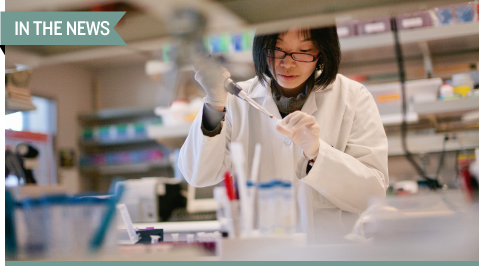
Image Credit: iStock.com / Hotaik Sung
An oral fluid-based test for HIV developed by researchers at Stanford University and the Alameda County Public Health Laboratory in California shows promise as a population-based screening tool. According to its makers, the test is easier to collect than blood but yields results that are just as reliable.
Blood-based assays are the most common way to test for HIV. However, they’re not that practical for rapidly testing a great deal of people to contain disease. People see blood draws as invasive, and needles aren’t always available in low-resource settings or aren’t safe to use in certain environments such as prisons. “There’s a lot of populations you just can’t reach out to by blood tests,” said Cheng-ting Tsai, the paper’s lead author and a graduate student at Stanford in a statement. “But if you were to do oral fluid, then all of a sudden you open up a brand new population that was not otherwise accessible to you.”
In comparison to blood, which poses an infection risk to healthcare workers, oral fluid is not infectious. However, the problem with human saliva is it contains very few anti-HIV antibodies, the markers of HIV infection, and current oral fluid assays don’t detect HIV as quickly or efficiently as blood tests. In Proceedings of the National Academy of Sciences, researchers demonstrate how a new oral fluid test, the Antibody Detection by Agglutination–PCR (ADAP) technology, was able to successfully detect HIV at the early stages.
Developers of ADAP analyzed how antibodies latch on to the HIV virus to create a more sensitive oral fluid test that was 1,000 to 10,000 times more sensitive than clinical enzyme-linked immunoassays in finding HIV antibodies. ADAP uses polymerase chain reaction (PCR), a technique often used to detect DNA, to find HIV antibodies, Carolyn Bertozzi, PhD, the Anne T. and Robert M. Bass professor of chemistry and professor of chemical and systems biology and radiology (by courtesy) at Stanford, told CLN Stat. “PCR is very sensitive—it can detect very low amounts of the target DNA, whereas techniques people use to detect proteins are far less sensitive. Our test brings the sensitivity of PCR to the testing of proteins—the HIV antibodies in oral fluid, more specifically,” Bertozzi explained. The process allows researchers to detect signs of HIV infection using oral fluid at earlier stages of infection than current tests.
ADAP was able to accurately diagnose 22 individuals who participated in Alameda County Public Health Laboratory’s HIV screening program and had been diagnosed with HIV through other methods. Overall, it yielded 100% clinical sensitivity and 100% specificity for detecting these antibodies from oral fluids. The test also didn’t produce any false positive results in 22 additional individuals who were HIV negative.
“We can reset the standards for oral fluid diagnostic sensitivity, bringing it closer to that of blood tests but with convenience of oral fluid,” Bertozzi said. Future plans are to scale up HIV screening efforts with larger sample collections. “We also have under tests under development for other infectious diseases as well as autoimmune conditions,” she added.